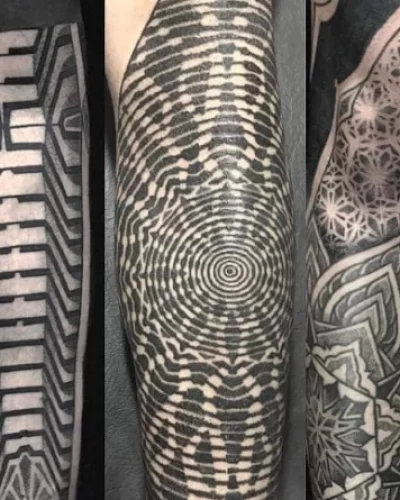The Body Art Hidden Beneath Ice-Covered History
In 1991, a frozen body discovered by two hikers in the Ötztal Alps marked the beginning of a discovery that would shake the history of tattooing to its core. This individual, naturally mummified, lived approximately 5,300 years ago during the Neolithic period. The scientific community named him “Ötzi,” in reference to the place he was found.
Alongside his belongings, lifestyle, and cause of death, Ötzi’s tattoos attracted great interest. These tattoos are considered the oldest known examples of tattooing in human history. But even more strikingly, they weren’t made for aesthetic purposes—they were likely intended for healing.
Traces of 5,000-Year-Old Tattoo Ink
Modern techniques revealed that Ötzi’s body bears more than 60 tattoos. These marks were created by embedding ink made from natural pigments mixed with soot into the skin. The tattoos—comprising simple lines and cross-like shapes—were mostly located around joints such as the lower back, knees, and wrists.
This strategic placement indicates that the tattoos served a therapeutic rather than decorative function. Ötzi’s tattoos bring to light a concept almost forgotten in modern times: the healing power of tattoos.
Pain Etched Beneath the Skin
Ötzi’s genetic profile revealed several health issues, including artery calcification, joint problems, and Lyme disease. The placement of the tattoos directly over these problematic areas suggests they may have served as a form of primitive acupuncture or pain relief.
This insight reveals that tattooing was not just a form of expression—it was also a means of coping with life. For today’s tattoo artists, this discovery calls for a deeper reverence toward the soul of tattooing.
The Ancient Origins of Tattoo Art
Today, tattoos might represent identity, aesthetic preference, or cherished memories. But the inks carried by Ötzi remind us that tattooing dates back much further and holds much deeper meanings. Even back then, people used the human body as a canvas to record the imprints of the soul and pain.
This shows that tattooing is not merely an art form—it is also a historical narrative, a cultural heritage, and a symbol of the respect for the human body.
Note: This article is an original work and may not be copied without attribution.
If you found it intriguing, feel free to explore more of my articles on the history of tattooing on the blog homepage.

